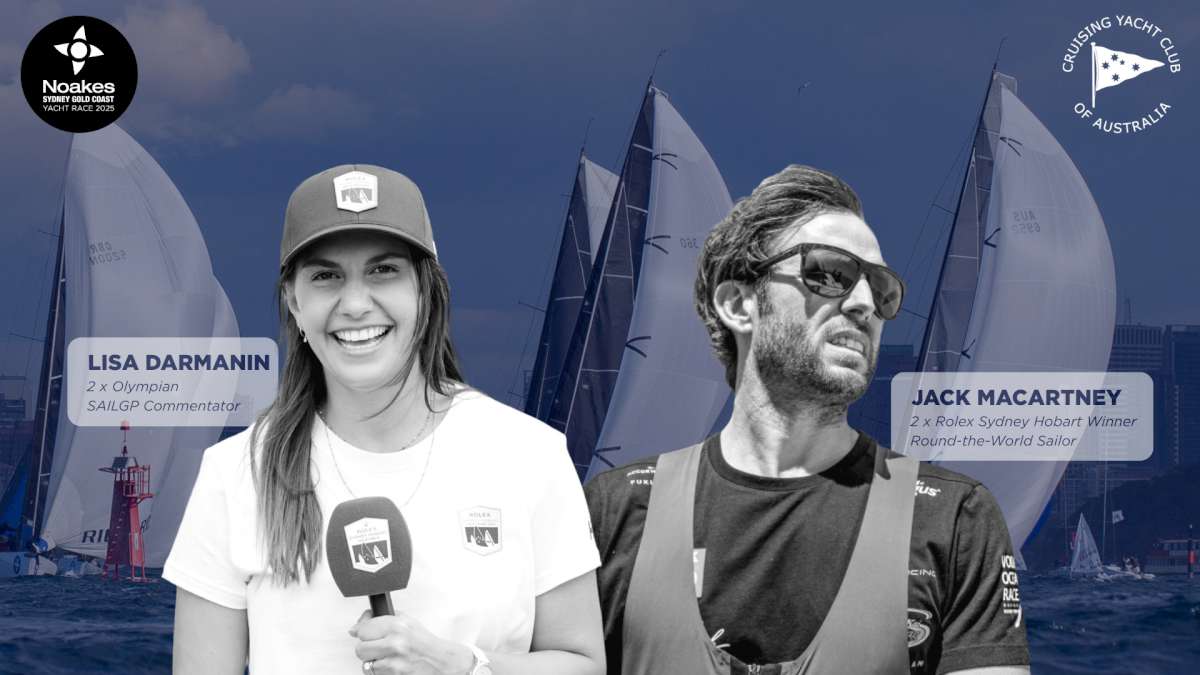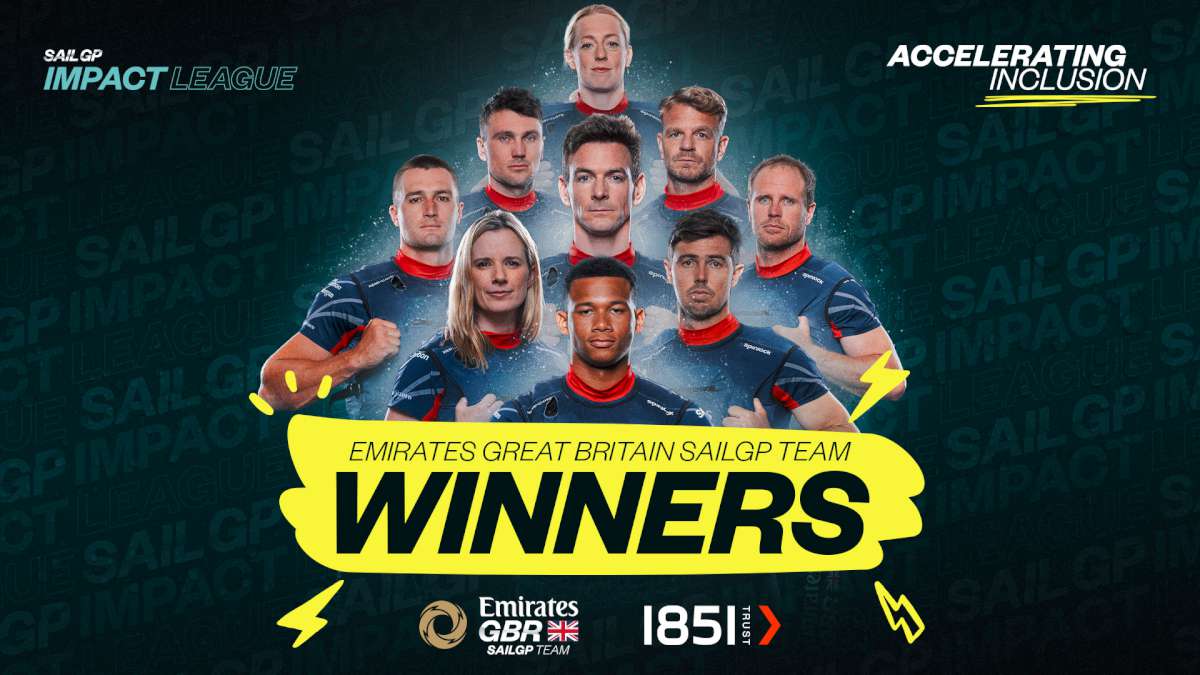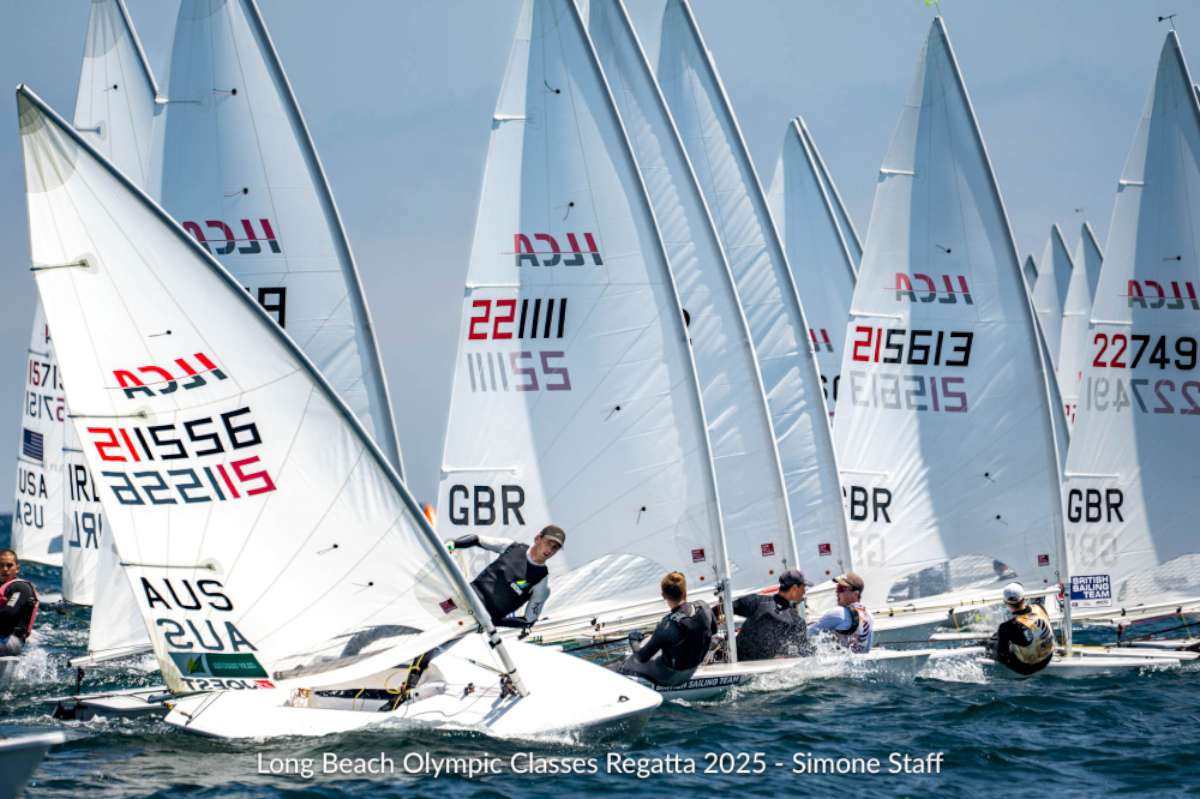Charles Caudrelier, winner of the ARKEA ULTIM CHALLENGE-Brest on Tuesday, may have been granted dream conditions for his victorious finish on Tuesday but thousands of well wishers braved the Breton drizzle to welcome home second placed Thomas Coville and his Sodebo Ultim this afternoon.
Caudrelier, 50 on Monday, christened ‘the machine’ by his team for his incredible work ethic, his drive and relentless energy received a warm, respectful accord for the job he and the Gitana team but the Brestois public saved a special welcome for ‘the recordman’ who has a particular relationship with the city which has hosted so many sailing record starts and finishes.
The 55 year old, incredibly completing his ninth circumnavigation of the planet today, was rewarded for his passion and his sharing as well as his extraordinary seamanship and skllls, with a wonderful welcome home. Back on Sunday 7th January Coville left the pontoon with tears in his eyes and there were a few today as he recognised so many faces among the thousands.
Coville the French solo skipper of Sodebo Ultim 3 crossed the line off Brest to finish the ARKÉA ULTIM CHALLENGE-Brest at 13:42:40hrs UTC this Thursday afternoon, to take second place. His elapsed time is 53 days 1hr 12mins 40 seconds. On this first ever solo multihull race round the world in 32m ULTIM class giants, Coville finished just 2 days 6 hrs 4mins 48 secs behind winner Caudrelier who arrived back in Brest on Tuesday morning.
This is Coville’s seventh round the world on a multihull, his fifth singlehanded. The sailor, conclusively the most experienced in a multihull on this race, endured some of the worst weather conditions that any of the six skippers had, and also overcame number of technical problems, one of which required him to stopover for 2 days and 2 hours hours in Hobart, Tasmania. Along the way, Coville took time to tell his story with passion, emotion and clarity.
As a leading light of round the world multihull challenges Coville was one of the first to believe in this race and as always promoted it since its first genesis. Before setting off for the ARKEA ULTIM CHALLENGE-Brest, he spoke of a race that would “mark history” and how he had the feeling he and the other skippers were “pioneers.” “We are going to find our share of pain, of self-sacrifice, of discovery. In a certain way, this is an expedition”.
His first words on the dock,
To the public “I didn’t think you’d be here. When you leave like we did, you never quite know what can happen to you. It was a race, a great competition. In this kind of project, you give everything of yourself and give it your all. Here I am before you a guy who’s just like driftwood, who’s washed around by the sea and thinks it’s beautiful because it’s simple. »
His round the world “I was at one with this machine and with my whole team. We wanted this project to be very human, and it was. When I left Tasmania, it was very tough, there were 35 to 40 knots, but to stay in the race and be competitive I had to leave at that time. That’s where I went back out to get this 2nd place. There aren’t many times in life when you’re able to commit so much.”
“Charles’ course made me dream”
His taste for competition. “Competing helped me a lot to do what felt so very painful when I was fighting for records. I fought for a long time against Francis Joyon’s time, but Francis himself wasn’t there. I didn’t have anyone to gauge against. My thoughts go out to Armel, it’s so hard for him. I was more at peace with myself in this competition than in during the record attempts. I’ve been waiting for this and Armel gave it to me, I thank him for that.”
The other competitors. “I’d like to ask Charles if he knew that if he had gone so fast in the first three days, he would have had all these beautiful weather sequences going for him. His course is what made me dream the most about the whole round the world! I like to be second behind him and I like to be ahead of Armel! I would also like to talk about Tom Laperche who is a great budding champion just incredibly mature.”
His boat, his team. “We built this boat for this round-the-world race, for this very race which we imagined ten years ago with Patricia Brochard. We did it together! This history belongs to us, it will be remembered for the rest of our lives.”
Coville’s race
The first days of the race really did see ideal conditions, especially a beautiful start out of Brest in sunshine and gentle 12 knot winds. At about three days later there was the big front after Madeira which Coville really chose to take carefully to preserve his boat and equipment so early in the race. “We all dreaded this stage. From a long time our we knew we were going to get 30-35 knots, in the end, I got 45 knots, with heavy seas,” he said at the time. “Maybe I had it too much on my mind mind, because I missed it, I was surprised by a shift, it cost me a lot of miles. In front, they (Tom Laperche and Charles Caudrelier) managed to pass at the right time and escape with a hundred miles of a lead.”
In contact with Armel Le Cléac’h, Coville crossed the equator in fourth position on Sunday January 14 at 8:36 a.m., after 6 days 20 hours and 6 minutes. “It was such a very busy week, a quite atypical descent of the North Atlantic, very physically demanding. It’s incredible to experience this round the world race on machines like these.” he adds.
South Atlantic: first big hitch
In second place following the abandon of SVR Lazartigue, 13 days 13 hours and 48 minutes after the start Coville crossed the longitude of the Cape of Good Hope on the night of Saturday January 20 to Sunday January 21 (at 3:18 a.m.), before entering the Indian Ocean, at level of Cap Agulhas, less than three hours later.
“It’s been two weeks since we started and a lot has happened! It takes so much of energy to be here. The Cape of Good Hope lives up to its name: we hope it will go well but we never know what is going to happen next.”
He then talks of a breakage of the lowering system of the starboard foil of Sodebo Ultim 3. “It is not a structural damage or a major problem, but for the moment, I am handicapped on one side.”
However the speed compromise does not spoil his return to the Southern Ocean, “Venturing here with a flying boat like Sodebo Ultim 3, that was a dream and we are – with the other sailors – doing something amazing. It’s unique, it’s the first time. It is a place in the world that does not belong to man, in which we are just tolerated. This moment is a real commitment, you can no longer go back, you have to keep going and get right into it , the big south is with you until Cape Horn.”
The Indian
The Indian Ocean lives up to its reputation as Coville is forced to work at the back of a front in turbulent conditions – the very opposite of what leader Caudrelier had on the leading edge of a system – this makes it all the more difficult to try and repair the foil down system.
“We suffered a lot, with penalizing technical problems to stay in front of the fronts, so we found ourselves behind with rough seas,” he said as he crosses Cape Leeuwin, southwest of Australia, Monday January 29 at 1:36 a.m., after 21 days 12 hours 6 minutes. But above all I tackled a task which, on paper, was unfeasible, that of manually repairing the lowering operation of the foils. It took me several days, I had to constantly go back and forth out to the float, put my hands in places where I wouldn’t normally put them, to finally manage to use my foils again.”
The Pacific
The next day, the skipper made the decision, in consultation with his technical team, to stop in Hobart (south-eastern Australia) to resolve several technical problems which had built up since entering the Indian Ocean. The very violent weather conditions expected between Tasmania and New Zealand reinforced this decision to repair in particular the main pulpit at the front of the main bow and the front net, seriously threatening his safety during maneuvers. Arriving in Hobart on January 31, he left on February 2 after 2 days 2 hours and 39 minutes of a stopover which Team Sodebo took advantage of to fully resolve the problem of lowering the foils.
On to the Pacific which Coville attacks in third position behind Charles Caudrelier and Armel Le Cléac’h and which he leaves on the night of Sunday 11 to Monday February 12 by crossing Cape Horn, for the tenth time in his career, after 35 days 12 hours and 10 minutes.
“Here I am at Cape Horn, the most fascinating place on the planet for a sailor. I have passed it several times, solo, with a crew, in a multihull, in a monohull. Some say you are allowed to sport an earring, I would look smart with ten earrings!”, he smiles. And he adds: “I have often nicknamed it the “Cape of Good Deliverance”, because it is a relief to return to areas where there is a little more traffic, there is less panic than when we are far from everything.”
Rise of the Atlantic: back in second place
As is often the case the climb up the South Atlantic is complicated and proves tedious for Thomas Coville who reports: “It’s very unstable. The South Atlantic, whether going up or down, is always a capricious place. It takes a lot of energy and concentration to sail in light winds.
And just as he had enjoyed in the North Atlantic, Indian and Pacific, he was back in touch and battling with Armel Le Cléac’h, who had beaten him to Cape Horn by just a few hours.
“I wanted this race, I wanted to be in a confrontation, and here I find myself again with Armel Le Cléac’h, who is between 250 and 450 miles in front of me. We traveled all over the Pacific, pulling each other’s socks off, it’s a privilege and a real satisfaction to fight with Armel, winner of the Vendée Globe (2016), he is a real reference for me. We are in the same race, with our technical setbacks which have clipped our sporting wings at several times, but we share the same desire to fight.”
Unfortunately a second technical setback requires Armel le Cléac’h to go into Rio de Janeiro, due to double damage to his rudders. But firmly established in second place, the skipper of Sodebo Ultim 3 has a particularly difficult crossing of Doldrums.
Returning to the Northern Hemisphere on February 22 at 4:30 p.m., after 45 days and 3 hours of racing, he says: “This passage from the Doldrums was very long and tedious, he was going back with me to the north, I I had the impression that the efforts and the excess of energy I made to maneuver to pass each squall and each cloud were of no use.”
Thomas then had to take the long route, out to the west of the Azores high pressure system to avoid the light winds zone before coming in directly to Brest. Indeed it was only on Tuesday February 27 that he was finally able to point the bows of Sodebo Ultim 3 towards Brest for “the final straight” on same day that Charles Caudrelier took the win. Today, two days later, on Thursday February 29, he returns to Brest after 53 days of a magnificent sporting and human epic.
To keep up to date with ARKEA ULTIM CHALLENGE, please visit https://www.arkeaultimchallengebrest.com follow on:
Instagram: @arkeaultimchallengebrest
Facebook: @arkeaultimchallengebrest
#ARKEAULTIMCHALLENGE




























